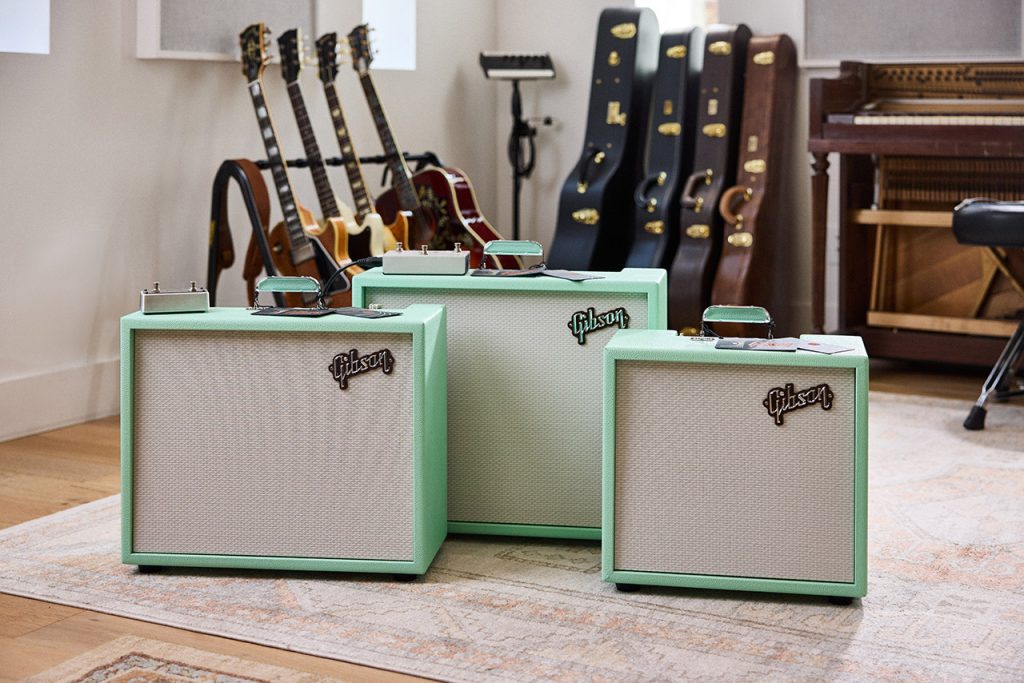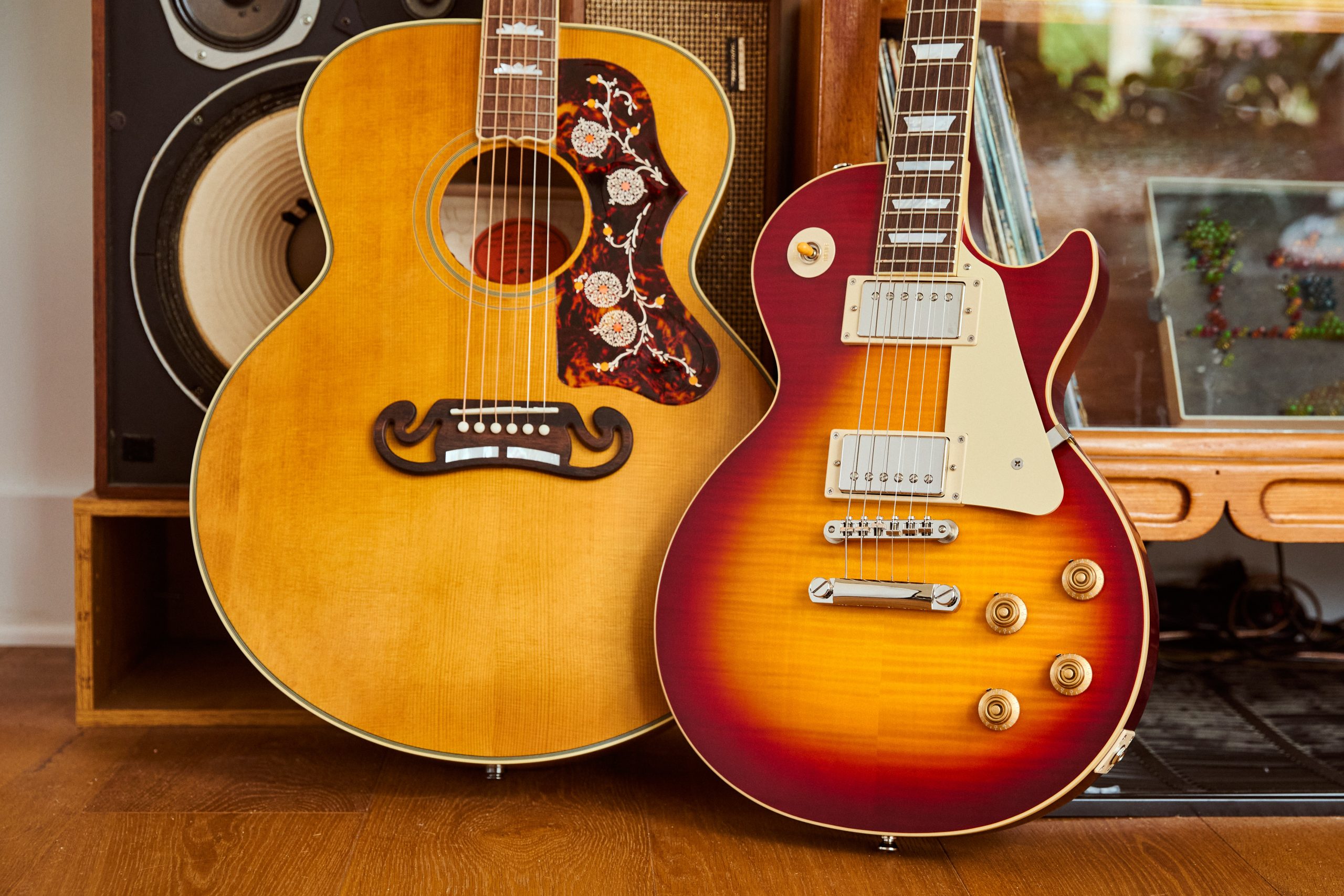Understand the key differences between electric and acoustic guitars to choose your ideal match
You’ve set your sights on becoming the next great guitarist—your generation’s Jimi Hendrix. The first step to mastering the art of the riff? Choosing the perfect guitar.
Between acoustic and electric guitars (and the many hybrid models on today’s market), newcomers have ample choices. Luckily, you won’t be locked into one style forever; you just need to pick a direction and run with it.
So, which one should you choose?
This guide is here to help. We’re breaking down the merits of both acoustic and electric guitars (and some of their respective drawbacks) for newcomers. We’ll explore factors such as playability, sound, and practical considerations to help you find your perfect match before you begin your guitar lessons.
Overview of electric and acoustic guitars
First, let’s cover a few defining features of acoustic versus electric guitars.
Traditional acoustic guitars feature:
- Six strings (typically nylon on classical instruments or various combinations of bronze, phosphor bronze, nickel, and steel on “steel-string” acoustic guitars)
- Wood body and neck construction
- A hollowbody design with a sound hole in the middle
There are numerous acoustic guitar types and variations on today’s market, but that’s the gist—a six-stringed, hollow instrument made of wood with a hole in the middle.
Electric guitars, on the other hand, typically feature:
- Six strings (usually made from a combination of nickel and steel)
- Wood body and neck construction that’s often painted
- A flat design without a hole in the middle (on solidbody models) or an arched top with f-holes (on semi-hollow and hollowbody models)
Despite having similar elements, acoustic and electric guitars have very different aesthetic profiles in most cases. What else should you know about electric versus acoustic guitars?
- Both can be amplified – While we often think of acoustic guitars as being entirely analog, this isn’t always true. Many modern acoustic guitars feature pickups—devices that “pick up” the vibrations of played notes, translate them into electrical signals, and send them to an amp. The pickup is a fixture of an electric guitar. Since it doesn’t always feature a hollow body, an electric guitar needs a pickup (and an amplifier, of course) to transmit loud, resonant sounds.
- Varied string counts are common for both – As you search for your first instrument, you’ll likely discover acoustic and electric models featuring various string counts. While additional strings can greatly affect guitar playing and change the character of an instrument, you should probably stick to a six-string model (or a four-string model, if you’re taking the bass guitar route) to start as a beginner guitar player.
- Both can be paired with accessories – Want to master slide guitar? Both acoustic and electric models are suitable for slide (though you may want to tailor your slide choice to fit your model). Want to ease your early chord lessons with a capo? Both acoustic and electric guitars are capo-compatible. Want to fingerpick instead of using a plastic plectrum? No worries—you can learn on an acoustic or electric guitar.
There are numerous similarities and differences between acoustic and electric guitar models—these are just the tip of the iceberg.

Image: If you choose the electric avenue, a good amp goes a long way—Gibson Falcons in Surf Bronco vinyl fit the bill
Sound and playability
We touched on this above, but it’s worth a deeper dive: electric and acoustic guitars project sound in completely different ways.
- Acoustic guitars primarily rely on their sound holes, the hole in the middle of the body, for projection. As you pick, pluck, or strum guitar chords, the top vibrates and the sound waves echo and reflect inside the body and move out of the hole. The result? A resonant, distinctly louder sound without the need for amplification in domestic and studio situations.
- Electric guitars don’t have sound holes in most cases, so they’re not very loud without an amplifier. While you can still hear an electric guitar without an amp, playing unamplified only really works for couch-based practice sessions or during a guitar lesson. If you’re looking to play live, jam with friends, or just enjoy the full sonic potential of your electric instrument, you’ll need an amplifier of some kind to turn up the volume.
Pros and cons of each type
With these comparisons in mind, let’s run through some advantages and disadvantages of each type of guitar for beginners.
Electric guitar advantages
Electric guitars are fun to learn on—and they might be easier to learn on for some players. Why?
- Lower action – “Action” is the distance between the strings and the fretboard. The action on electric guitars is generally lower than the action on acoustic guitars, so it’ll take less work to press the strings down and play single notes, open chords, or barre chords.
- Thinner necks – While this isn’t always true, electric guitars often feature slimmer necks than acoustic guitars. This is ideal for kids or players with smaller hands.
- Amplification can be a boon – Not sure if a note sounds right? Turn up the volume. While you can amplify some acoustic guitars, amplification might make it easier to train your ear in the early days of your music career. It’s also a lot of fun to turn up and rock out.
Electric guitar disadvantages
What might dissuade newcomers from choosing an electric guitar?
- You’ll need more stuff – Your starter kit for an acoustic guitar will include the guitar itself, a tuner, and some picks and a strap if you choose. But if you choose an electric guitar to start, your starter kit isn’t really complete without an amp—and perhaps pedals, and definitely a cable.
- Large hands can complicate product choice – If you’re a guitar player with big hands or wide fingers, you might struggle with fretboard precision in your early days of playing electric since the strings are generally closer together than they are on some acoustic models. This doesn’t mean electric isn’t the right choice—it might just mean you have to choose a model with a wider or fatter neck.
- Practical applications vary – If you’re looking to play in a folk style or you prefer the “unplugged” sound, you simply might prefer the character of an acoustic guitar. Don’t feel too confined by genre, though; both acoustic and electric guitars can be versatile enough for different playing styles and feature in most musical genres.
Acoustic guitar advantages
What about acoustic guitars? Let’s dive into some of the pros:
- Acoustic guitars are sometimes more affordable – Starter acoustic models, on the whole, can carry lower price tags. They’re simpler—especially if you choose a model without a pickup (which you can add later). Not to mention that you won’t need to buy an amp (or pedals, or a cable) to experience the full impact of your guitar’s sound. For would-be musicians on a starving artist’s budget, acoustic guitars offer a slightly lower financial barrier to entry.
- Higher action can train your hands early – While the lower action on electric guitars can ease the learning process, there’s something to be said for starting at a higher physical “difficulty” level (though this will matter less as your skills grow). Instead of learning on a low-action guitar and having to acclimate to high-action axes later, you can always do the opposite.
- They’re easier to troubleshoot – Simply put, you can see every element of an acoustic guitar (especially models without a pickup). With a completely analog design, you can more easily troubleshoot technical issues—there aren’t any hidden wires to contend with.
- Fingerpicking might be simpler to learn – With a wider distance between strings and a higher action, it might be easier to learn the finer points of fingerpicking with an acoustic guitar. This isn’t to say that you can’t learn to fingerpick on an electric model, but the nuances of acoustic construction might be more beginner-friendly for fledgling pickers.
Acoustic guitar disadvantages
Why might you skip the acoustic route as a newcomer?
- You’re confident in your chosen genre – If it’s your dream to shred loud with a live rock band and “mellow” isn’t in your vocabulary, an electric guitar simply might be a better thematic fit for you.
- Acoustic guitars take up more space – Since acoustic guitars are generally deeper and wider than most electric models, they require more room—bigger cases and more storage space. But if you buy an electric guitar, an amp, and a beginner set of pedals, you likely won’t be saving any space either way.
Acoustic vs. electric guitars: Which one should you get?
Okay, but which kind of guitar should you buy? Let’s offer some hypothetical matches for a few different beginner players:
- If you’re looking to take an economical route, consider an acoustic guitar—they’re usually somewhat cheaper, and you’ll need less equipment to get started.
- If you’re a future electric artist through and through, just opt for an electric guitar to start. Learn to play the instrument you want to play.
- If you’re looking to fingerpick, an acoustic model might best suit your early needs. You might even consider an acoustic variant with nylon strings—a favorite of flamenco players, mariachi maestros, and renowned classical artists.
- If you live with roommates or you’re a teenager looking to avoid arguments over the volume of late-night practice sessions, choose an electric guitar. With a headphone amp, you can achieve nearly silent play.
And if you’re still not sure, take an artist’s approach: go to a music store, pick up every model you can get your hands on, and noodle around until you find a guitar that resonates with you, literally and figuratively. And don’t forget, almost all experienced guitarists end up with multiple electric and acoustic instruments in their collection—there’s always room for both.
Start your search at Gibson
While there are many characteristics to consider (both about your playing style and the instruments themselves) before buying an acoustic or electric guitar, there’s one constant in the music world—if you’re looking for a high-quality guitar that will last a lifetime, start your journey with Gibson.
Check out our full selection of guitars and find your perfect match now.

